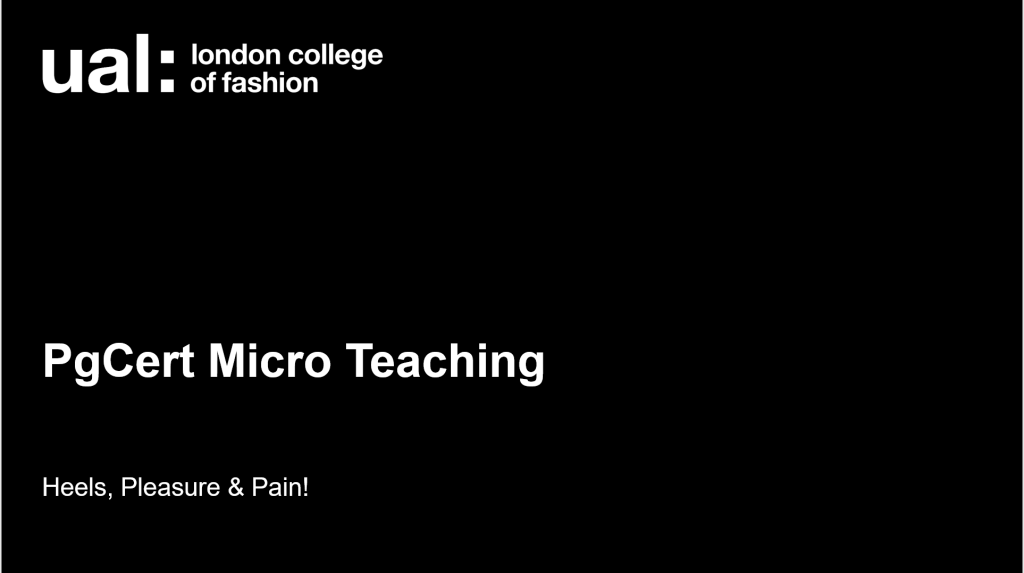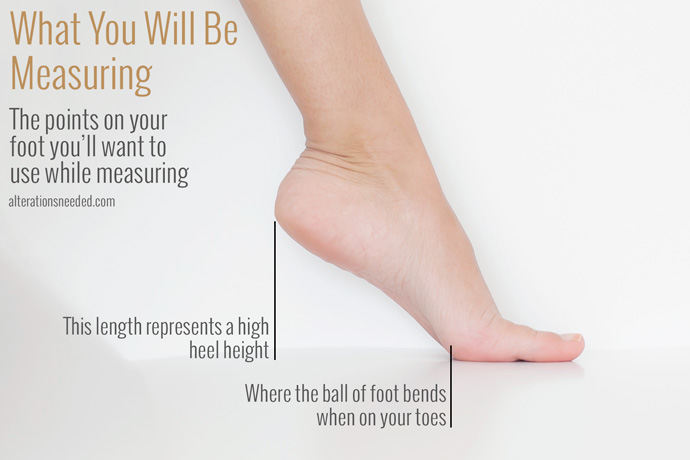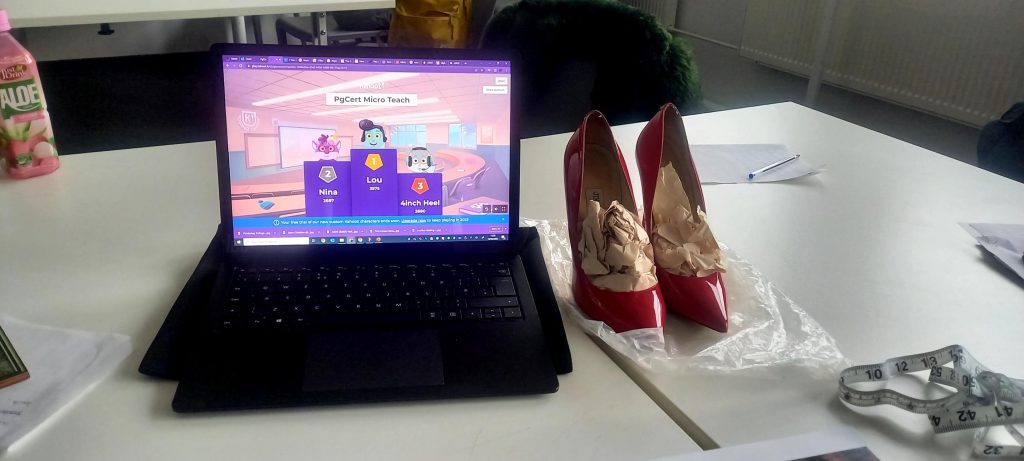
On the 10th of February 2023, I delivered a 20-minute microteaching session as part of my PgCert studies for my tutor group entitled ‘Heels, Pleasure & Pain’. I chose a subject that was not related to my professional teaching discipline which is Fashion Business Management also the object itself was a fashion object. I brought with me a pair of Jimmy Choo high heels (12.5cm) as my object. The aim of my ‘Object- Based learning’ activity was to help my audience develop team working through group activities, critical analytical skills through questions and discussions as well as an understanding and knowledge of individual heel heights calculation through practical activities.
Preparing a 20-minute microteaching session was the hardest part, although it was not the first time. The time constraint forces you to be very intentional in choosing the information and type of content you will present to the class in order to achieve the intended aim of the session. I dedicated the first pages to the learning outcomes and course structure to set the learning expectations. I intentionally used images more than text based slides. This was new and forced me to memorize my content. I felt more confident during the delivery as I was not relying on the written text on my presentation. It also allowed me to engage better with my cohort through eye contact. I included a short video as teaching support and paired the audience in two. They gathered their thoughts while watching the video then we had an open discussion after the video. I also used a quote: “One of the best ways that status can be conveyed is through impracticality“ and asked each participant to share their opinion in relation to my object and the subject of my lesson. This activity also allowed me to break from the teaching and make the participants active in their learning process.
Fiorella and E.Mayer (2015) state that ‘the outcome of learning depends both on the material presented to the learner and the learner’s cognitive activity during learning‘, and that learning is a change in what you know caused by your experience.’ I wanted to integrate a practical exercise to reinforce that statement. I brought with me measuring tape so that participants could calculate their personal heel height based on their foot measurement. What sounded like a complex task ended up being very engaging, fun and interactive. See below the mentioned exercise.

In their book Make It Stick, the science of successful learning, C. Brown et.al. argue that ‘a single, simple quiz after reading a text or hearing a lecture produces better learning and remembering than rereading the text or reviewing lecture notes.‘ I chose to end my teaching session with a short Kahoot quiz to test my cohort’s understanding and test whether I reached my intended learning outcomes.

The quiz proved to be highly engaging, fun and a great way to end the teaching session. The friendly competition between the cohorts was motivating and the podium at the end of the game was rewarding for the winner of the game.
The feedback received at the end of the session allowed me to reflect on my practice and challenged me to create better teaching material incorporating more object-based and game-based learning activities especially because my teaching subject (fashion business) is not a tangible creative art subject.
2 responses to “Microteaching Reflections”
Liked how you linked the reading you have read with your experience of the microteaching session. You might like to consider how this experience impacts on your wider teaching practice.
Thank you for your feedback. The object-based teaching pushed my teaching practice’s boundaries in a sense that I never thought about including this as a teaching or learning method in my subject area. So I decided to incorporate it in one of my lessons on product costing as part of the financial forecasting chapter that my students have to produce as part of their portfolios. I asked each student to bring an item of clothing of their choice. The aim of this lesson was to show them: 1 what a piece of clothing is made of i.e. main fabric, zip, button, lining, collar, cuffs, interface…so that they understand that each element needs to be identified then priced individually first in order to calculate the total cost. The task given to students was to look at their item and create a lay plan of that item. A lay plan is basically a drawing of all different parts of a piece of clothing or an item.
In the past, this activity was dreaded by students as most of them are not comfortable with numbers and were not expecting financial forecasting as part of their business studies.
The outcome of the exercise was quite interesting. Some of the students found it challenging, some because drawing was not their forte and others because they brought a complex item that had several parts to it. However, at the end of the task, they had a better understanding of the steps required to cost a product and it was much easier to apply financial aspect to it because they had identified all the parts making their piece of clothing prior to the calculation.
In terms of teaching practice, this activity increased the level of engagement of each student as they had to focus on the analysis of their garment and there was no space for distractions. Some used it as an opportunity to bring out the ‘creative’ side in their drawings, which they do not get to use much in business studies.